Can You Use 20 Year Old Nail Polish?
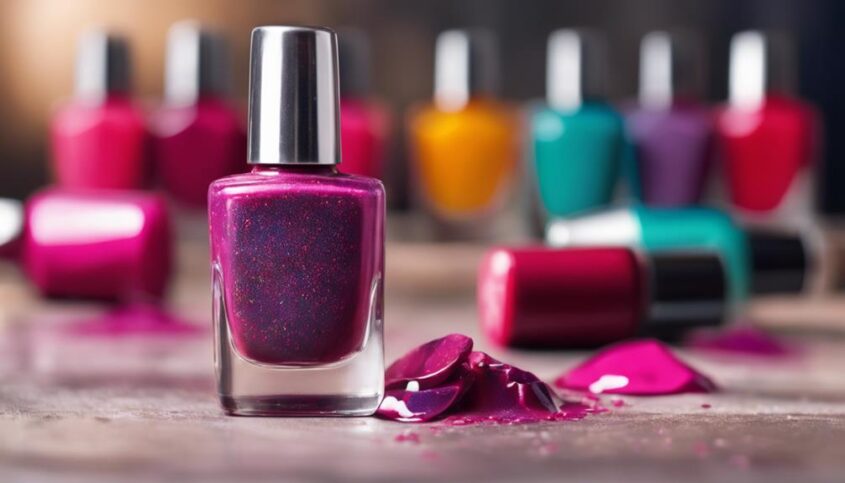
Using 20-year-old nail polish may not be safe due to formula changes and deterioration with time. Signs of expiration include separation, odor change, and discoloration. Effects of aged polish include clumping and streaking during application. Assess viability by checking consistency, color, and odor. Safely use old polish by discarding if deteriorated and patch testing before full application. Ideal storage conditions are cool and dark to preserve quality. Proper sealing of bottles maintains formula integrity. For more tips on antique nail polish use and storage, explore further.
Key Takeaways
- Check for changes in consistency, color, and odor to assess usability.
- Discard if separated or has a foul smell indicating deterioration.
- Add nail polish thinner to revive thickened polish if needed.
- Perform a patch test before full application to avoid adverse reactions.
- Proper storage in a cool, dark place can extend the shelf life of old nail polish.
Nail Polish Shelf Life
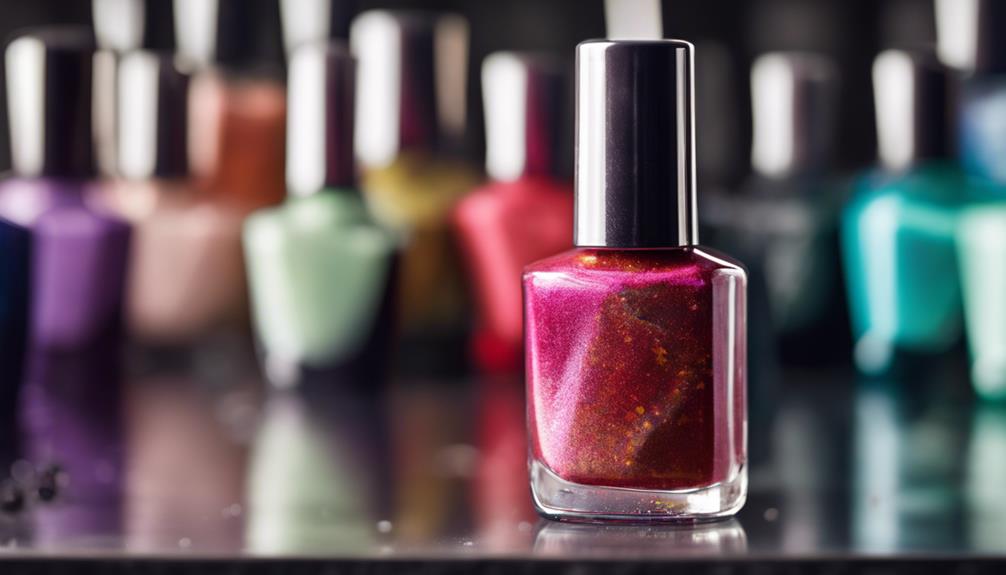
What determines the shelf life of nail polish and how does it impact its quality over time? Nail polish shelf life is influenced by various factors, with the most critical being the formulation of the polish itself. The ingredients used in nail polish play a significant role in determining how long it will remain usable. Chemical compositions can undergo changes over time, affecting the consistency, color, and overall performance of the polish. Exposure to air and light can also accelerate the degradation process, leading to a shorter shelf life.
Moreover, the way nail polish is stored can impact its longevity. Proper storage in a cool, dark place can help preserve the polish for a longer period. Fluctuations in temperature and exposure to direct sunlight can hasten the deterioration of the product. As nail polish ages, it may become clumpy, separate, or develop an unpleasant odor, indicating that it is no longer suitable for use. Understanding these factors can help individuals make informed decisions about the quality and usability of their nail polish collection.
Signs of Nail Polish Deterioration
The quality of nail polish can deteriorate over time due to various factors such as chemical changes, exposure to light and air, and improper storage conditions. When nail polish ages, it may exhibit several signs of deterioration. One common sign is the separation of the polish, where the color pigments and solvents no longer blend effectively, leading to a streaky or uneven application. Another indicator is a change in consistency; if the polish becomes thick, goopy, or stringy, it may be past its prime. Additionally, a strong, unpleasant odor can signal that the formulation has degraded. Moreover, the color of the nail polish may darken or become cloudy over time, indicating a loss of quality. Furthermore, the brush of the nail polish may harden or fray, affecting the application and finish. Being mindful of these signs can help individuals identify when their nail polish has deteriorated and needs to be replaced for optimal results.
Effects of Expired Nail Polish
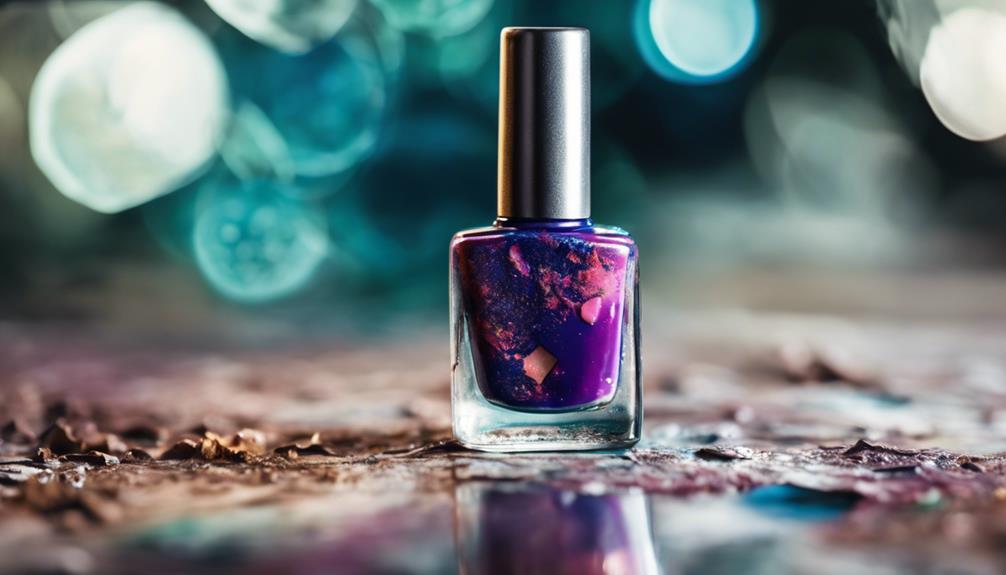
When nail polish reaches its expiration date, its performance and appearance may be compromised due to changes in its chemical composition. Expired nail polish can exhibit several negative effects, impacting both the application process and the final look. Here are some common effects of using expired nail polish:
| Effect | Description | Solution |
|---|---|---|
| Clumping | The polish may become thick and clumpy, making it difficult to apply smoothly. | Add a few drops of nail polish thinner. |
| Separation | Components in the polish may separate, leading to an uneven application. | Shake the bottle thoroughly before use. |
| Discoloration | Expired polish can change color, resulting in a different shade than expected. | Test on a nail wheel before applying. |
| Streaking | The polish might streak or leave lines during application, affecting the finish. | Use thin, even coats and allow proper drying. |
| Longer Drying Time | Old nail polish may take longer to dry, causing smudges and imperfections. | Apply thinner layers and use a quick-dry topcoat. |
Being aware of these effects can help you determine whether it's time to part ways with your old nail polish and opt for fresh, high-performing alternatives.
Testing the Viability of Old Nail Polish
When evaluating the viability of old nail polish, it is essential to consider its shelf life, as nail polishes have a limited lifespan. Assessing the quality of the polish after years can provide insight into whether it is still suitable for use or if it has degraded. Additionally, knowing application tips for old polish can help maximize its potential and ensure a smooth and lasting finish.
Nail Polish Shelf Life
Testing the viability of old nail polish involves assessing its longevity and quality to determine if it is still suitable for use. Nail polish, like other beauty products, has a shelf life that can impact its performance. Over time, nail polish can thicken, separate, or change color, indicating its deterioration. Proper storage, such as keeping it away from direct sunlight and extreme temperatures, can help extend its shelf life. Additionally, shaking the bottle gently before application can help mix the formula and improve its consistency. However, if the nail polish has a strong, unpleasant odor or shows signs of mold or extreme clumping, it is best to discard it to prevent any adverse effects on the nails.
Quality After Years
Assessing the viability of old nail polish involves evaluating its quality and longevity to determine its suitability for continued use. Over time, nail polish can undergo changes such as thickening, separation, or color alteration due to exposure to air and other environmental factors. To assess the quality of old nail polish, inspect its consistency, color, and odor. Shake the bottle gently to check for separation and clumps. Additionally, observe the application process on a nail to see if it spreads evenly and dries properly. If the polish maintains its original texture, color, and application properties, it may still be viable for use despite its age. Conducting these assessments allows for the identification of nail polishes that have retained their quality and are safe for application.
Application Tips for Old Polish
To determine the usability of old nail polish, consider employing application techniques that gauge its performance and condition. Start by shaking the bottle thoroughly to mix the formula. If the polish appears separated or has a thick consistency, add a few drops of nail polish thinner and roll the bottle between your hands to blend it evenly. Before applying, ensure your nails are clean and dry. Apply a base coat to provide a smooth surface for the old polish. When applying the old polish, use thin, even coats to prevent streaks or clumping. Finish with a top coat for added shine and protection. By following these application tips, you can maximize the potential of your old nail polish and achieve a polished look.
Safe Ways to Use Old Nail Polish
When considering using old nail polish, it is important to ensure its safety by following a few key guidelines. Firstly, inspect the nail polish for any changes in color, consistency, or unpleasant odor. If the polish appears separated or has a foul smell, it's best to discard it to prevent any potential harm to your nails. To revive slightly thickened nail polish, try adding a few drops of nail polish thinner to restore its original texture for smoother application. Shake the bottle well before use to ensure the components mix adequately.
Another safety measure is to perform a patch test on a small area of your nail before applying the old polish entirely. This can help identify any adverse reactions or allergies to the product. Additionally, store your old nail polish in a cool, dark place away from direct sunlight and extreme temperatures to prolong its shelf life. By adhering to these safety precautions, you can enjoy using your old nail polish while prioritizing the health of your nails.
Proper Nail Polish Storage Tips
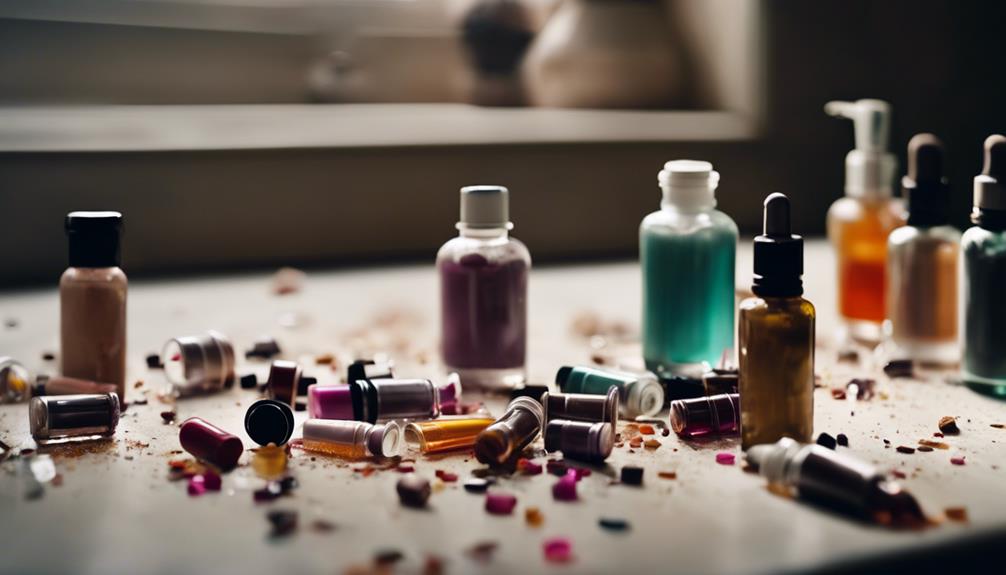
When it comes to maintaining the longevity of your nail polish collection, proper storage is key. Factors like storage temperature can impact the consistency and color of your polishes over time. To ensure your nail polishes stay in optimal condition, remember to always seal them tightly and store them away from direct sunlight.
Storage Temperature Impact
Maintaining appropriate storage conditions for nail polish is crucial for preserving its quality and longevity. One of the key factors impacting nail polish is the storage temperature. Extreme temperatures, both hot and cold, can deteriorate the formula of the nail polish, leading to separation, thickening, or changes in color and consistency. To ensure optimal storage temperature, store your nail polish in a cool, dry place away from direct sunlight and heat sources. Fluctuations in temperature can also impact the quality of nail polish, so it's best to avoid storing it in areas prone to temperature variations, such as bathrooms. By keeping your nail polish stored at a consistent, moderate temperature, you can prolong its shelf life and maintain its performance.
Seal Tightly Always
Proper storage of nail polish involves always ensuring a tight seal on the bottle to prevent air exposure and maintain the integrity of the formula. By following these tips, you can extend the lifespan of your favorite nail polishes:
- Tighten the cap securely: Make sure the cap is twisted on tightly after each use to create a proper seal.
- Store upright: Keeping the nail polish bottle in an upright position can help prevent leaks and maintain the seal between the cap and the bottle.
- Avoid over-tightening: While it's important to secure the cap, be cautious not to over-tighten it, as this could cause the cap or bottle to crack.
Avoid Direct Sunlight
To ensure the longevity and quality of your nail polish, it is imperative to shield it from direct sunlight, as prolonged exposure can lead to color alteration and formula degradation. Sunlight contains ultraviolet (UV) radiation, which can break down the chemical bonds in nail polish, causing changes in color and texture. When exposed to sunlight for extended periods, pigments in the polish may fade or darken, and the consistency of the formula can become thick or clumpy. To avoid these undesirable effects, store your nail polish in a cool, dark place away from direct sunlight, such as a drawer or a cabinet. By taking this simple precaution, you can preserve the vibrancy and performance of your favorite nail polishes for longer periods.
Final Verdict: Using Antique Nail Polish
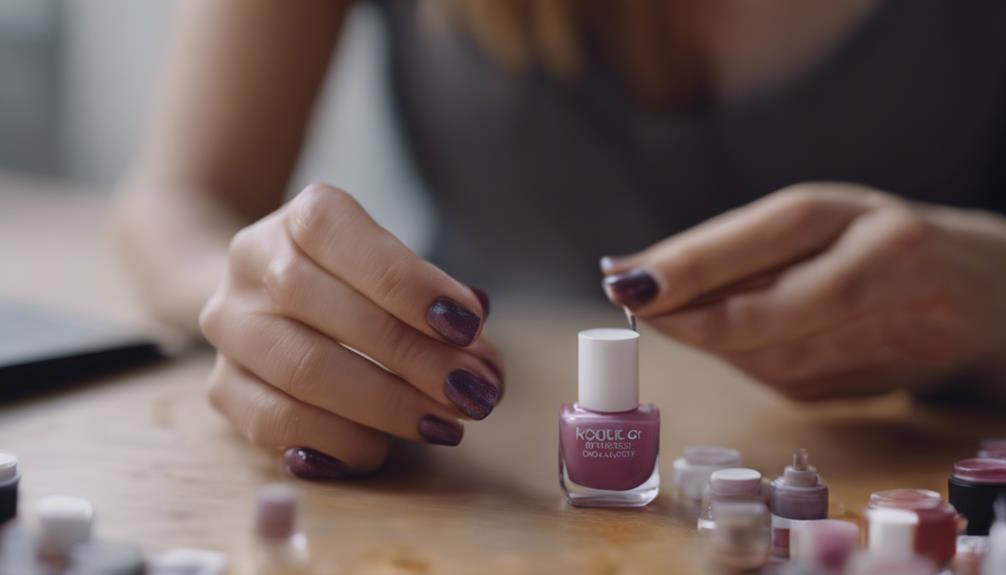
After careful examination and testing, the efficacy of using antique nail polish has been conclusively determined. Antique nail polish, despite its age, can still be used effectively under certain conditions. Here is the final verdict on using antique nail polish:
- Color Quality: Surprisingly, antique nail polish can retain its original color vibrancy if stored properly. Some formulas may even develop a unique depth over time, offering a vintage charm that is hard to replicate with modern products.
- Consistency: While some antique nail polishes may have thickened or separated over the years, many can be restored to their original consistency with a few drops of nail polish thinner. This allows for a smooth application and even finish.
- Longevity: Depending on the storage conditions, antique nail polish can have a prolonged shelf life. Properly stored nail polish can last for decades without losing its effectiveness, making it a sustainable and eco-friendly choice for nail enthusiasts looking to reduce waste.
Frequently Asked Questions
Can Old Nail Polish Be Revived or Restored in Any Way?
Old nail polish can sometimes be revived by adding a few drops of nail polish thinner or acetone to restore its consistency. However, it is important to note that expired or severely degraded products may not be salvageable.
Are There Any Potential Health Risks Associated With Using Old Nail Polish?
Using old nail polish may pose health risks due to potential chemical breakdown over time. Ingredients could degrade, leading to less effective formulas or even harmful substances. Consult expiration dates, and if uncertain, consider discarding for safety.
How Can You Tell if a Nail Polish Is Safe to Use After Being Stored for 20 Years?
Determining the safety of 20-year-old nail polish involves inspecting its consistency, odor, and color. If the polish appears separated, has a foul smell, or changed color significantly, it should be discarded due to potential health risks.
Is It Safe to Mix Old Nail Polish With Newer Nail Polish?
Mixing old nail polish with newer ones may alter the formula's integrity, affecting performance and potentially causing clumping or separation. It's recommended to use each polish as intended to ensure optimal results and prevent any adverse reactions.
Are There Any Special Precautions to Take When Using Nail Polish That Is 20 Years Old?
When considering the use of nail polish that is two decades old, it is crucial to prioritize safety. Special precautions may include checking for separation, unusual odors, or changes in texture. Consult with a professional for guidance on safe usage.




